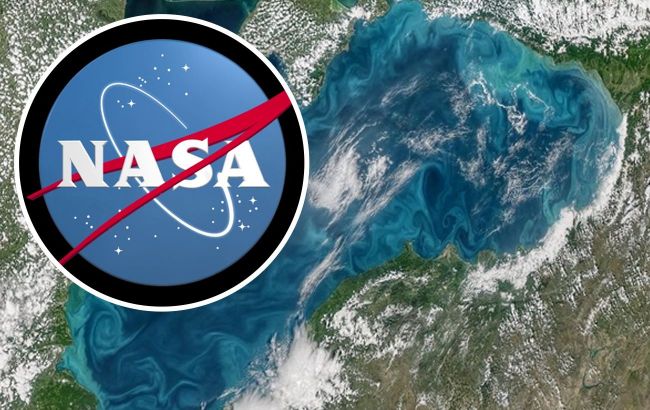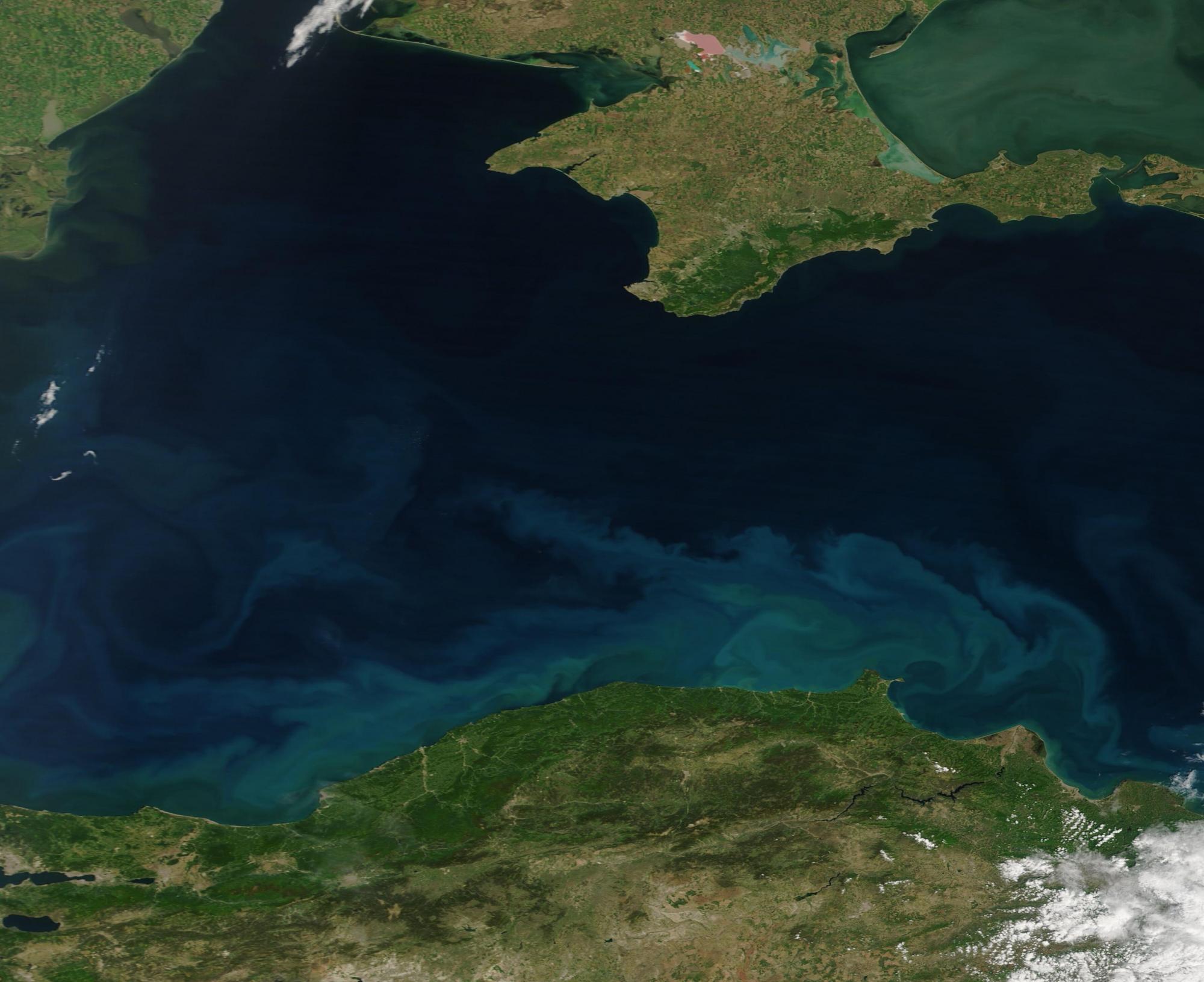Black Sea suddenly changes color: NASA issues important warning
 The Black Sea has dramatically changed its color (RBC-Ukraine collage)
The Black Sea has dramatically changed its color (RBC-Ukraine collage)
Scientists report that the Black Sea has changed color dramatically. Until recently, it had a dark blue color on space images, and now the color has turned emerald green. The largest color changes occur off the coast of Bulgaria and Romania (Danube Delta).
RBC-Ukraine tells what happened to the water in the Black Sea and what it threatens to do, citing a report by Radio Varna.
In May, the color of the Black Sea began to change, and according to scientists, this was due to the massive reproduction of phytoplankton. Now, in the images from space, it is not dark blue, but emerald green.
Changes have already occurred off the coasts of Bulgaria and Romania, and in early June, the same color change was seen in front of the Ukrainian coastline. Photos of the changes were captured by the Aqua satellite.
According to experts, the phytoplankton invasion could lead to a sharp drop in oxygen levels in the Black Sea, and thus to the mass extinction of its marine life.
According to NASA experts, the same processes are taking place in May this year as every year. Bright colors continue to mark the progress of the increasingly intense spring phytoplankton blooms in the Black Sea in early May 2024. And there are many factors leading to its rapid bloom.
Large rivers, such as the Danube, Dnipro, Rioni, and Dniester, flow into the Black Sea. Thus, through the river runoff, nutrients enter the large inland basin. Pollution from human activities such as agriculture and industry also contributes to the growth of phytoplankton.
Phytoplankton consists of single-celled algae and cyanobacteria. It is nourished by sunlight and is eaten by larger fish and shellfish.

Satellite image of the Black Sea in May 2024 (photo: gsfc.nasa.gov)
Phytoplankton are the main producers of the seas and oceans. These microscopic algae, bacteria, and plant-like protists use chlorophyll to produce food from sunlight and dissolved nutrients.
More than 150 different types of phytoplankton have been found in the Black Sea, providing an abundance of fish and other marine life.
Although phytoplankton live in relatively small quantities in the Black Sea year-round, the combination of abundant nutrients, warm sea temperatures, and lengthening sunlight often stimulates explosive reproduction, resulting in massive blooms that can be seen from space. Swirls and patterns are created from currents and eddies in the water.
Earlier we wrote that scientists have discovered a sudden increase in chlorophyll in the ocean.

